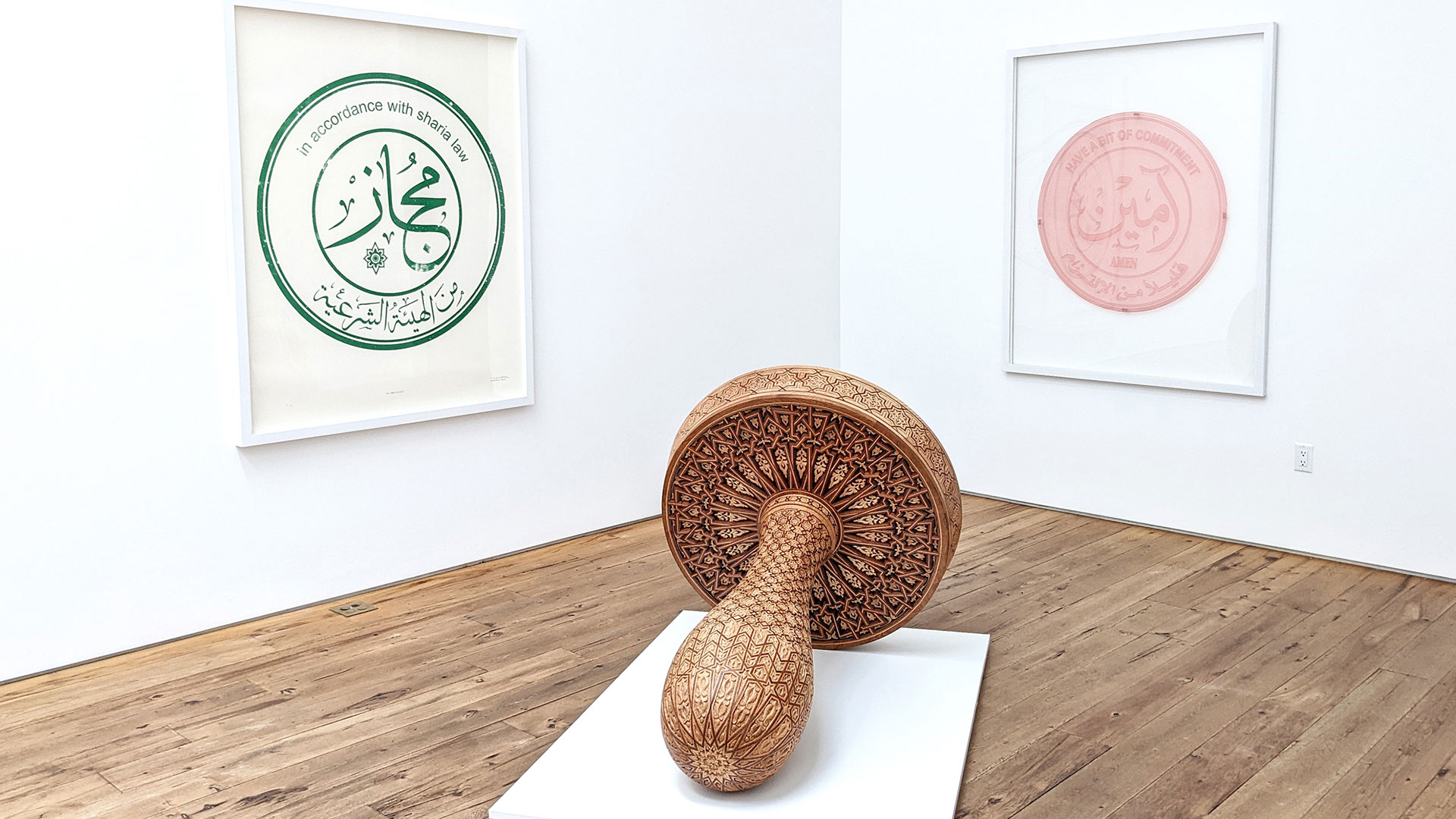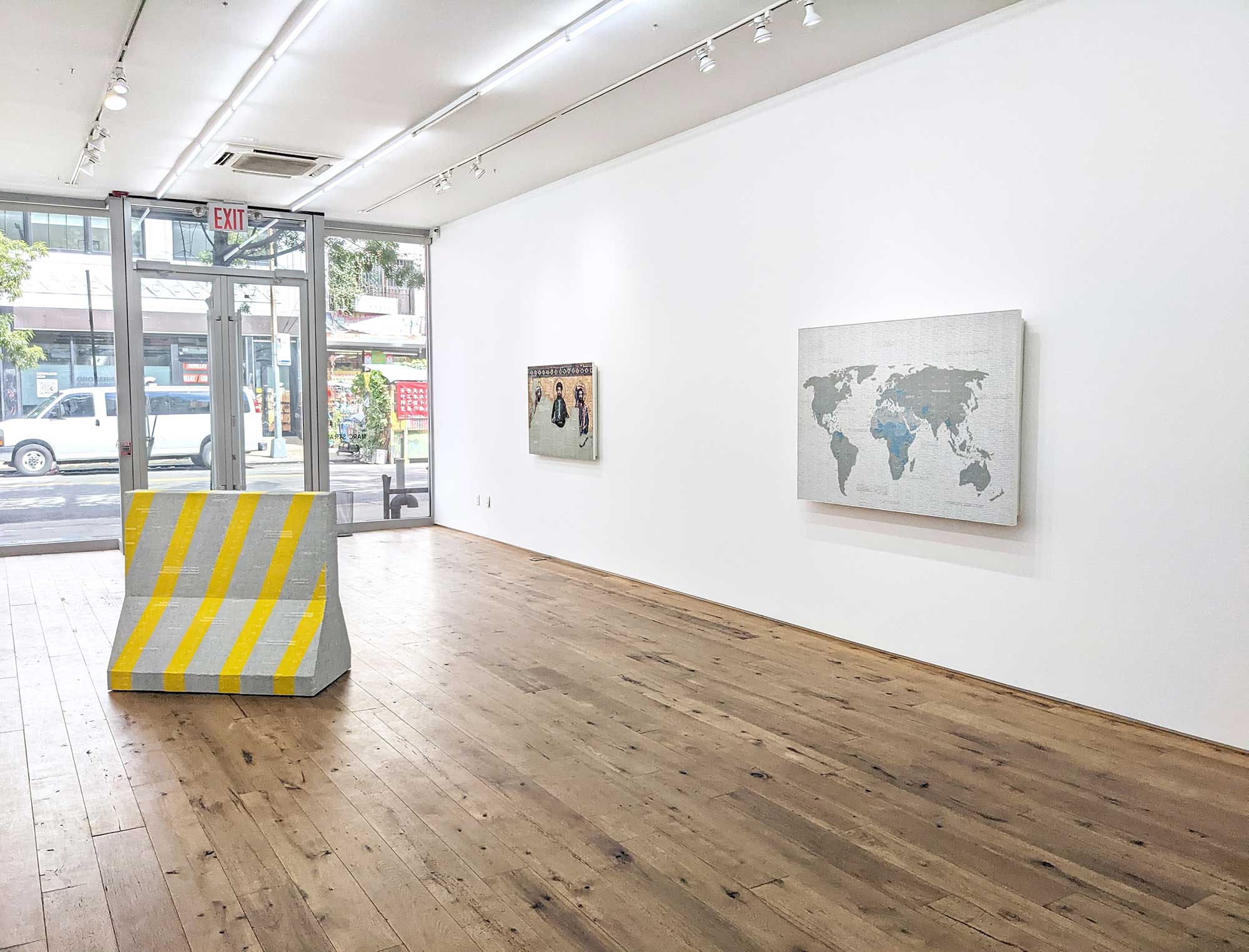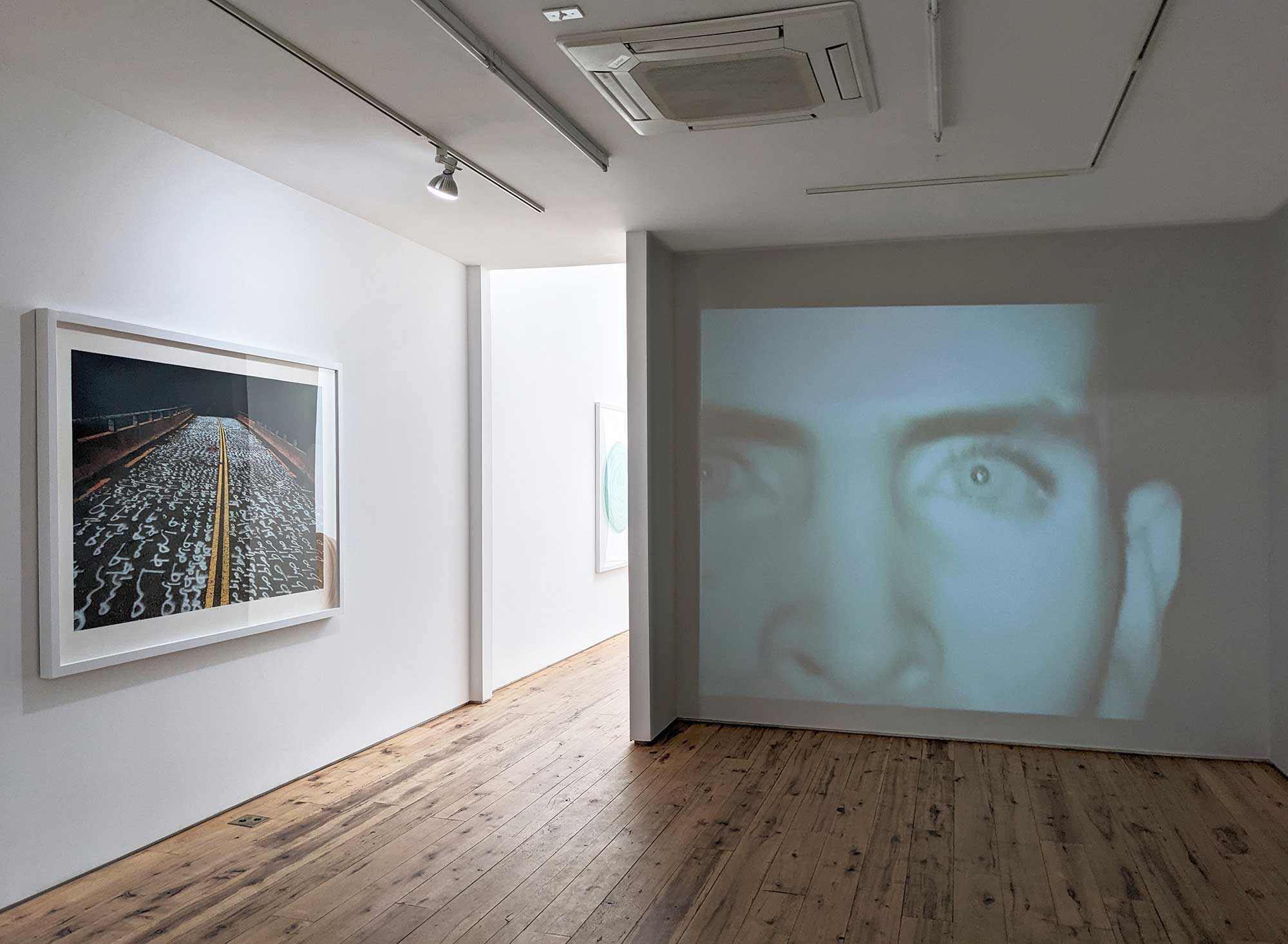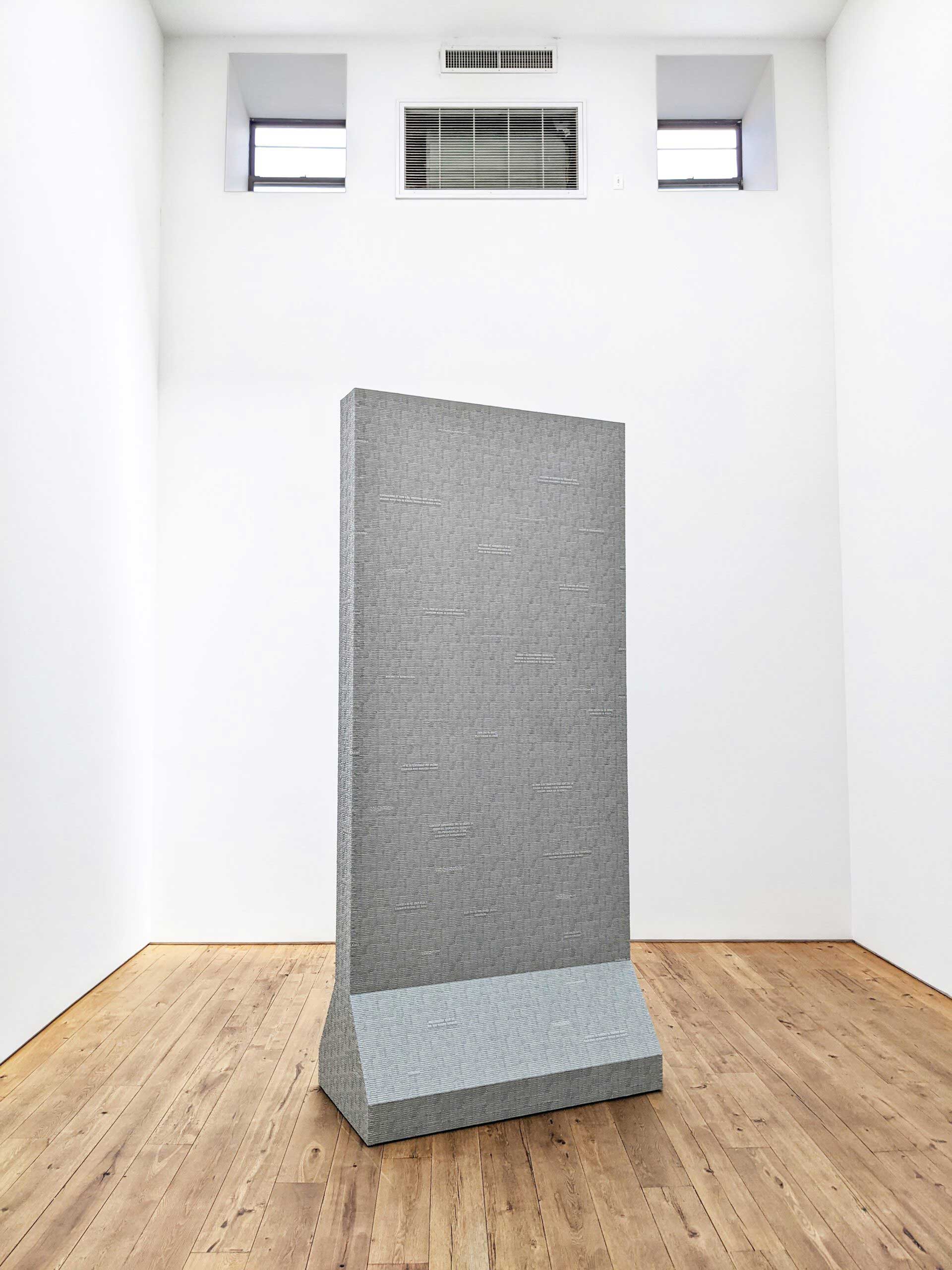MARC STRAUS is pleased to present its first solo exhibition with Abdulnasser Gharem.
Abdulnasser Gharem (b. 1973) lives and works in Riyadh, Saudi Arabia. In Hospitable Thoughts, his first solo gallery exhibition in New York, he engages with themes of control and authority, as well as a desire to preserve and respect the history upon which traditional art is built.
In his country, Gharem has paved the way for the past twenty years with his unwavering commitment to social and political change through his artistic practice, and to the propagation of his studio school’s ongoing effort to foster truth, teach compassion, and develop ideas that break boundaries
“Living and working in Saudi Arabia for almost a decade, I’ve had the unique experience of being immersed in two paramount revolutions at once: one social, the other cultural. Gharem has been a catalyst for the tremendous development of the contemporary art landscape we now see burgeoning in the region. The rigour of his work, his beautiful and powerful narratives has led to his recognition as a leading artistic figure in Saudi Arabia and beyond.” - Christina Lessa
Gharem invites us to look more closely at the ideological and physical barriers we’ve created that separate person on this planet. By seeing and listening, we have the possibility of understanding that different ideas, cultures, and beliefs have currency. His perspective as an artist is very much informed by his experience as a military officer in Saudi Arabia for most of his adult life. As a military man he says, “I was instilled with repetition. Orders were issued to us and then we repetitively reissued them to others. I felt the harshness of repetition.”
In this exhibit, Gharem has produced several barriers, whose shape and meaning are universally recognized. In Concrete Wall II, a monumental work, the barrier functions to separate people, while the smaller barrier, Concrete Block V, suggests rerouting traffic and blocking vehicles from entering. What makes these works so compelling and beautiful are their surfaces, covered with tiny rubber print letters from both the Arabic and the Latin alphabets. These letters are put on in the reverse, as one does with a printing press, conveying essential thoughts and observations on our contemporary societies.
The repetition re-appears in the painstaking work of adorning the surfaces with tens of thousands of letters. The content is opaque, perhaps reminiscent of the text paintings of American artist, Glenn Ligon, whose text comes from literature from major Black authors. Gharem’s writing in Arabic and in English, if decipherable, requires a mirrored reading by the viewer. Once decoded, the messages speak to challenges shared by millions around the world.
Gharem reminds us that while repetition may be beautiful, as in prayer, social structures such as governments and organized religion often use it to create predictable responses, to bind us towards a desired goal or viewpoint, and ultimately foster the notion of separation.
War has been a constant presence in our history: small and large wars still rage today. The largest and most defining one at present is against all living species, a changing climate wrought from man’s carelessness and obsession with consumption ─ a “hysterical violence,” as Gharem calls it. In the end, most wars are about the market and the means and ownership of production, especially in this 21st century when the disparity between the haves and have-nots has reached a new apex.
What’s changed in this century is the immediacy of virtual information. It opens the doors to communication and discourse for all, though there are governments that would suppress such access in an attempt to limit information. Gharem points out that there is an increasing expansion of the algorithmic mind, the overlapping of human life with the lives of computer processors. Yet, despite its threat digitization holds promise; the democracy of technology is difficult to stifle.
The barriers can be broken.
Abdulnasser Gharem graduated from the King Abdulaziz Academy in 1992. He later attended The Leader Institute in Riyadh, and in 2003 he studied at the influential Al-Meftaha Arts Village in Abha. Gharem had his first museum solo exhibition in the United States in 2017 at the Los Angeles County Museum of Art (LACMA). He has participated in one-person and group exhibitions in Europe, Asia, the Gulf and the USA, including the Louisiana Museum of Modern Art, Humlebaek, Denmark; Chalet Saqqarah, Gstaad, Switzerland; Victoria & Albert Museum, London, UK; Palazzo Grassi, Venice, Italy; Mori Art Museum, Tokyo, Japan; the Station Museum, Houston, TX; Bates College Museum of Art in Lewiston, ME; Utah Museum of Contemporary Art Salt Lake City, UT; Art Museum of the University of Memphis, Memphis, TN; among others. Additionally, Gharem participated in the 53rd and 54th editions of the Venice Biennale (La Biennale di Venezia).
His work is in private and public collections including The British Museum, London, UK; V&A Museum, London, UK; Los Angeles County Museum of Art, California, USA; Palazzo Grassi, Venice, Italy; Greenbox Museum, Amsterdam, The Netherlands; The Saudi Arabian Ministry of Culture & Information, Saudi Arabia; BASMOCA: Basma Al Sulaiman Museum of Contemporary Art, Jeddah, Saudi Arabia; The Barjeel Art Foundation, Sharjah, UAE; among others.
Read more +
Read less -







 Sign in with email
Sign in with email





